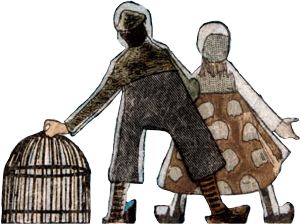Gent giet het beroemdste toneelstuk van Maurice Maeterlinck in een tentoonstelling.
Samen met Libris Literatuurprijswinnaar Bernard De Wulf en de acteurs van NTGent gaat de Sint-Pietersabdij de uitdaging aan: Maeterlincks L'Oiseau bleu op een originele manier tot leven brengen. Net zoals de baanbrekende toneelregisseur Stanislavski dat in 1908 in Moskou deed.
L'Oiseau bleu veroverde van bij die eerste opvoering de wereld. In 1911 trok het de jury in Stockholm over de streep om de Nobelprijs voor Literatuur aan Maeterlinck toe te kennen.
De Sint-Pietersabdij brengt nu in primeur het filosofische sprookje als een tentoonstelling. De bezoeker beleeft het tijdloze meesterwerk niet vanuit zijn theaterstoel, maar wandelt zelf door het stuk. Bewaarde ontwerpen van de vroegste opvoeringen werden hiervoor in Moskou, Londen, New York en Brussel opgespoord.
De tentoonstelling dompelt je helemaal onder in de sprookjesdroom van twee kinderen die op zoek gaan naar de Blauwe Vogel. Een blauwe feeërie maar ook een initiatie in Maeterlincks ideeënwereld.
L’Oiseau bleu. Op zoek naar geluk kadert in het uitgebreide programma van het Maeterlinckjaar 2011, georganiseerd door het Departement Cultuur van de Stad Gent naar aanleiding van de 100ste verjaardag van deze literaire Nobelprijs.







